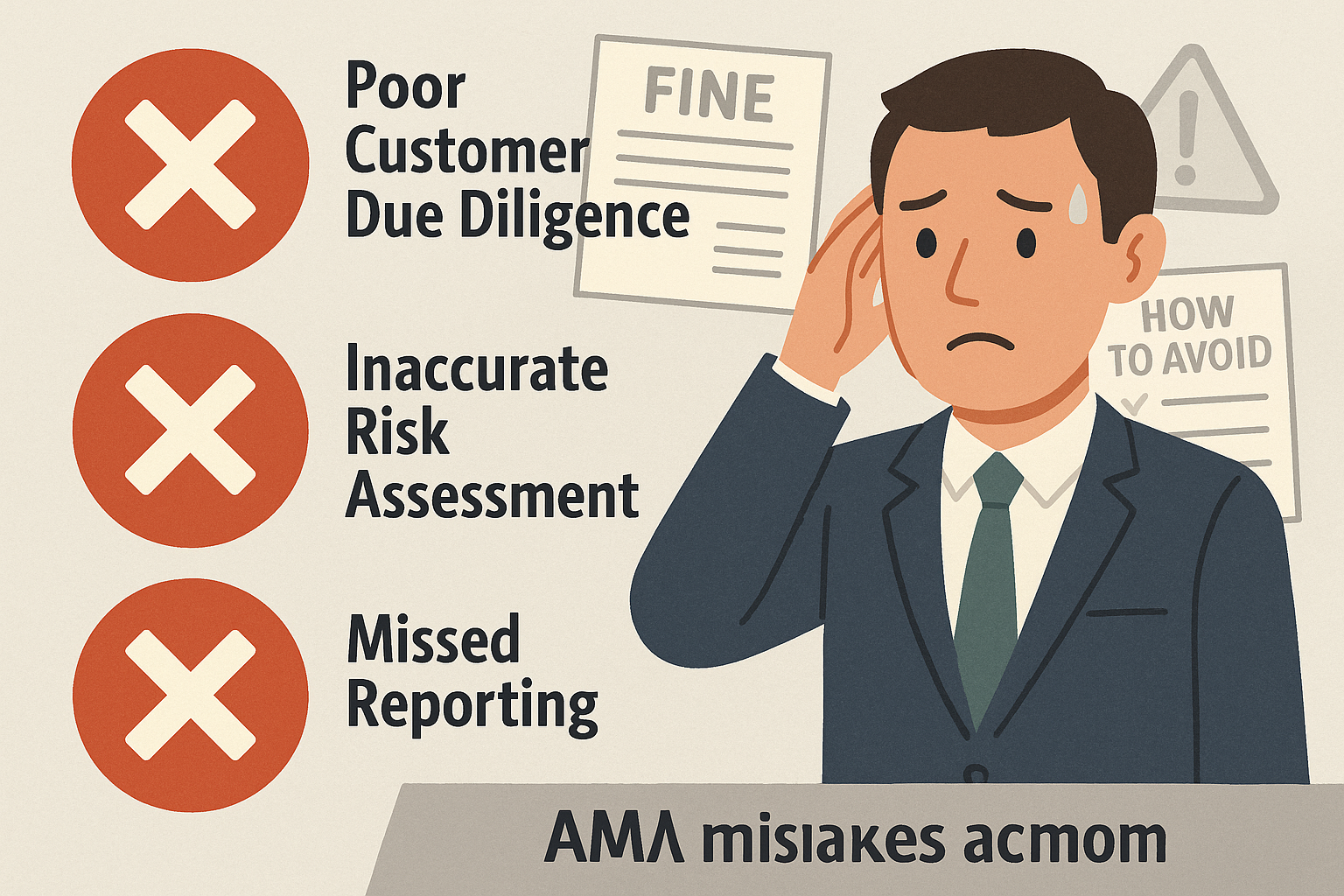Top 3 AML Mistakes NZ Businesses Make (And How to Avoid Fines)

Worried about penalties under NZ's new AML rules? Simple mistakes can be costly. Learn the common errors businesses make & how to avoid them.
The Rising Stakes of AML Compliance
As New Zealand's Anti-Money Laundering and Countering Financing of Terrorism (AML/CFT) Act Phase 3 approaches its June 1, 2025 implementation deadline, the stakes for non-compliance are higher than ever. Businesses face potential penalties of up to $5 million for companies and $1 million for individuals who fail to meet their obligations.
Yet many businesses continue to make the same critical mistakes that could lead to significant fines and reputational damage. In this article, we'll examine the three most common AML compliance mistakes we see among New Zealand businesses and provide practical guidance on how to avoid them.
Warning: Costly Consequences
Recent enforcement actions by the Department of Internal Affairs have resulted in fines ranging from $75,000 to over $3 million for businesses that failed to implement proper AML/CFT systems. Don't let your business become the next cautionary tale.
Mistake #1: Incomplete Documentation
The most common mistake we observe is inadequate documentation of AML/CFT compliance efforts. Many businesses have AML processes in place but fail to properly document them, leaving themselves vulnerable to regulatory scrutiny.
What Regulators Expect:
- A comprehensive, written AML/CFT program document
- Detailed risk assessment methodology with clear criteria
- Evidence of ongoing monitoring and reviews
- Records of all customer due diligence measures
- Documentation of staff training and competency assessments
How to Avoid This Mistake:
- ✓Create comprehensive templates for all required documents, ensuring consistency across your organization
- ✓Implement a document management system to organize and track all compliance-related records
- ✓Conduct regular audits of your documentation to identify and address any gaps
Mistake #2: Inadequate Risk Assessment
Many businesses struggle with developing and implementing effective customer risk rating frameworks. Risk assessments are often too simplistic, inconsistently applied, or fail to consider all relevant risk factors.
Common Risk Assessment Failures:
- Using a "one-size-fits-all" approach rather than tailoring to your business type
- Focusing solely on customer type while ignoring other risk factors
- Failing to update risk assessments when customer circumstances change
- Inconsistent application of risk criteria across different customers
- Lacking clear procedures for handling higher-risk customers
How to Avoid This Mistake:
- ✓Develop a multi-factor risk assessment model that considers customer type, geography, transaction patterns, products, and delivery channels
- ✓Implement clear risk-level criteria with specific thresholds and scoring methodology
- ✓Establish escalation procedures for higher-risk customers that require enhanced due diligence
Mistake #3: Inconsistent Monitoring
Even with good initial risk assessments, many businesses fail to implement consistent ongoing monitoring procedures. This creates significant compliance gaps and increases vulnerability to money laundering risks.
Monitoring Weaknesses:
- One-time risk assessments without regular reviews
- Failing to adjust monitoring frequency based on risk levels
- Not documenting monitoring activities and findings
- Lack of processes for identifying and reporting suspicious transactions
- Insufficient staff training on transaction monitoring
How to Avoid This Mistake:
- ✓Establish a risk-based monitoring schedule with more frequent reviews for higher-risk customers
- ✓Implement automated transaction monitoring where possible to identify unusual patterns
- ✓Create standardized monitoring logs to document all reviews and findings
How Risk Rater Can Help
Avoiding these common mistakes doesn't have to be complicated or expensive. Risk Rater's platform is specifically designed to help New Zealand businesses address these challenges with:
- Pre-built compliance documentation templates tailored to your business type
- Comprehensive risk assessment frameworks that consider all relevant factors
- Automated monitoring tools with customizable schedules based on risk levels
- Secure record-keeping for all compliance activities
- Regular updates to align with changing regulatory requirements
Don't Risk Non-Compliance
With less than a month remaining until the June 1st deadline, take action now to ensure your business avoids these costly mistakes.
Conclusion
The consequences of AML/CFT non-compliance can be severe, but by addressing these three common mistakes, your business can significantly reduce its risk exposure. Proper documentation, effective risk assessment, and consistent monitoring form the foundation of a robust compliance program that not only meets regulatory requirements but also protects your business from being exploited for money laundering or terrorism financing.
Remember, when it comes to AML/CFT compliance, prevention is always more cost-effective than remediation after a regulatory intervention.